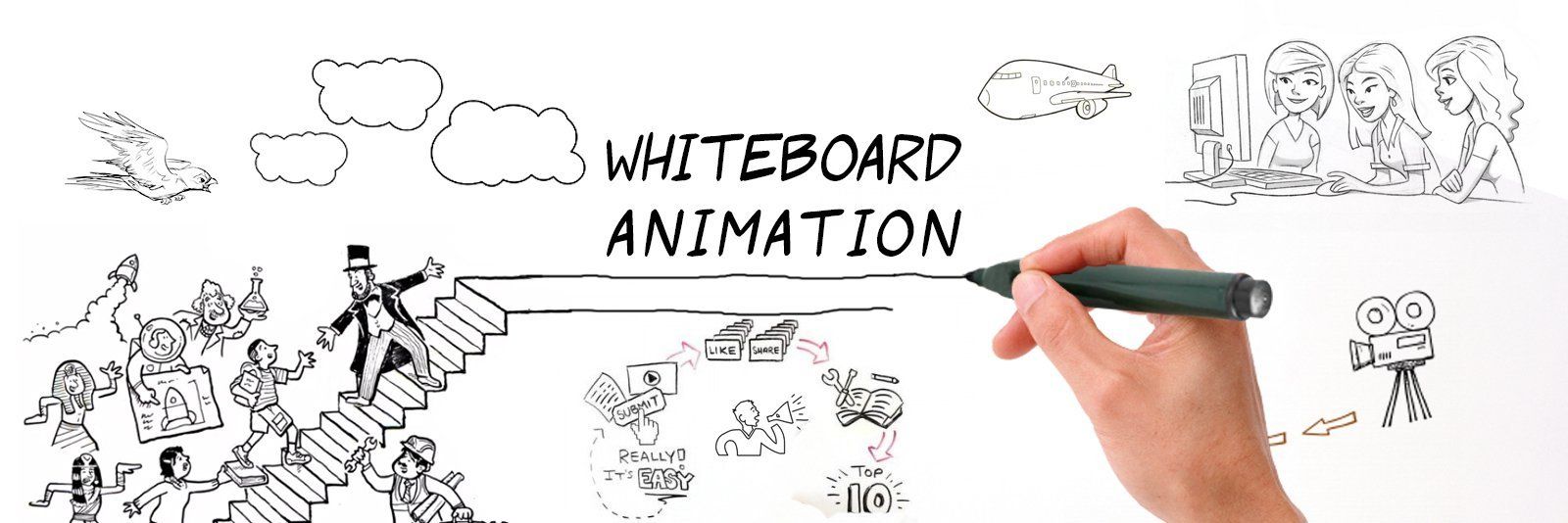6 Lessons Learned After 85 Explainer Videos
- By Ognen
- •
- 05 Jan, 2018
I’ve been creating explainer videos for a little over 3 years now. In those past couple of years, I’ve had my hand in over 85 videos for companies of all different shapes and sizes. And while that might not be all that long, or that many videos compared to some folks, I’d like to think I’ve learned a few valuable lessons along the way.
So for those of you looking to create an explainer video for your business, here are 6 lessons I’ve learned. I hope these insights help you avoid the mistakes I’ve made in the past, and create an engaging video with lasting value.
1. Keep it Short
An elevator pitch is meant to be a short, speedy way to tell someone about your business…preferably in the amount of time it takes to ride an elevator. If you already have an elevator pitch, crafting a concise explainer video should be easy. Try to keep your video to 90-seconds or less. In most cases you should be able to keep it to 60-seconds, or even 30 if your business is relatively simple.
The shorter your video runs, the more likely you’re going to engage viewers from start to finish. If you spend too long describing the problem your customers have, wait too long to introduce your product or service, or waste too much time describing features, you’re going to lose people’s attention and defeat the purpose of having a video.
If you’re in charge of writing a script, keep in mind that 150 words equals around a minute of spoken word. While you may be able to read faster than that, you want to make sure the video has adequate breathing room to ensure viewers can keep up with the content you’re presenting.

2. Get to The Point
We all know that guy. The guy who loves to talk but never seems to get to the point. Inevitably we tune them out, and if there weren’t social norms, we’d probably just walk away mid-sentence. Online, things aren’t quite so cordial. If your video takes too long to get to the point, people are going to click the dreaded back button and move on (in most cases, to your competition).
So while you want to spend adequate time framing the problem for your viewers before introducing your solution, you also want to get to the point before it’s too late. I’ve seen plenty of videos that spend a minute or longer just setting up the context. However, studies show that most viewers are going to drop off in the first 15-30 seconds. If possible, introduce your solution before your video hits the 30-second mark for maximum impact. On some videos, like the one we did for Crazy Egg, we quickly introduced the solution before even starting the video. It seems to have worked pretty well for them.

3. Know Your Audience
It sounds like Marketing 101, but in order to produce a video that engages an audience, it’s critical to understand that audience first. It sounds trite, and most people will probably gloss over this point and move on to the next one, but it’s really important.
Even if you’ve been running your business for 25 years and feel like you know it all, it never hurts to dig a little deeper. Sometimes the reasons you think your customers choose to buy from you, end up not being the right reasons at all. That’s why it’s important to talk to your customers. You could send out a survey or call a few on the phone. Either way, get some real customer feedback before you craft the messaging for your explainer video.

4. It’s All About the Script
I’ve literally said this a hundred times, but the foundation of any great explainer video is a well written script. Your voice over, visuals, and everything else hinge on composing a succinct script that makes sense to any viewer.
For starters, I would watch as many quality explainer videos as you can to get a feel for what works and what doesn’t. Once you’re ready to start writing, use a template to structure the flow of your video. For example, start by explaining the problem your viewers face, then introduce your solution, and close with a call to action.

5. Use a Professional Voice Talent
Nothing is more distracting in a video than a bad voice over. You know what I’m talking about. The guy who sounds like he’s recording on a Talkboy during Armageddon. Or the muffled computer mic that keeps clicking and scratching.
Hiring a professional voice talent is well worth the money, and it will probably end up being one of the least expensive aspects of your project. In addition to having broadcast-quality voices, professionals usually have access to top of the line recording equipment and sound-proof recording studios.
Strapped for cash? Use your iPhone, buy a Yeti, or check out Voices.com.

6. Have a Call-to-action
If you know your ABC’s, you know you should “Always Be Closing”. The same mantra holds true for explainer videos. Hopefully there is a point to your video, whether that be getting users to sign-up, make a purchase, or get in touch. Assuming your video did its job, viewers should be interested in taking the next step, so make it very clear what that next step is.
In addition to telling people what to do next during the video, make sure the content surrounding the video supports your call-to-action. This might be a sign-up form beneath the video, a large “Buy Now” link off to the side of the video, or your contact information prominently displayed. Whatever you do, make sure viewers are walking away from your video with a crystal clear idea of what to do next.




1. Impressive visual power
You’ve probably noticed that marketers are making use of visuals more and more, to communicate their messages and ideas to their target audiences. And this is not by chance: it’s just that we are all visual learners. This means that we learn, understand, assimilate and remember information more easily through drawings, diagrams, charts, designs and any other visual resource. So, with this in mind, just picture in your mind how powerful video content can be and even more so if we mixed in designs and graphics in motion! Motion graphics fits perfectly with this “visual learning” logic and helps you reach your audience through compelling and persuasive content.
2. Stunning designs in motion
Keep in mind that motion graphics is not only about designs. Animation plays a key role too! Basically, motion graphics gets the most out of animation techniques to make the elements really come alive. One of the best things about this style is that it gives you the chance to convey any complex business idea by using graphic elements in movement. Result? You will make your target audience understand (and also remember) what your product is about, in just a couple of seconds. Amazing!
3. Mix with other styles
Motion graphics can also be merged with other explainer video styles to maximize its effectiveness. Let me be clear on this: imagine that besides resorting to the motion graphics technique, you also need to add an extra “human/personal” touch to your video. In this case, you will then need to add some cute characters that give your video that emotional approach you’re looking for. And that’s when you can mix motion graphics and character animation together! But, of course, you can mix it with other techniques too. We’ll talk about this in the next paragraphs.
Why Should I Use Motion Graphics?
Now you have a lot of information in mind. But maybe you still don’t know if motion graphics is the right choice for your next marketing video. Check out this list that summarizes the different situations or contexts in which you can resort to a motion graphics video.
Use a motion graphics video when…
Your company has a more serious or professional profile.
When your company sells a product or service that has a more professional profile and you want to enhance that identity through video marketing, then choose a motion graphics video.
You want to provide your video with an elegant style.
Remember that motion graphics is one of the most formal and sophisticated explainer video styles out there. It can help you bring that extra seriousness you’re looking for (and that other marketing videos may lack).
You want to pass out complex ideas without losing the visual appeal.
Motion graphics is a great choice if you need to pass out stats, numbers, facts and hard data that could be harder to assimilate if you didn’t use graphics in motion.
You want to synthesize concepts through an educational approach.
It’s said that an image is worth a thousand words. Then imagine the power of images in motion! Motion graphics have a huge synthesis power and make use of attractive visuals to get to an educational approach, without losing its “charm”.
You have a B2B company, or a B2C company that deals with “hard data”.
If you have a software, IT or financial company, for instance, motion graphics is a great choice for you: it lets you communicate hard data in a very direct and understandable way, without losing engagement.




